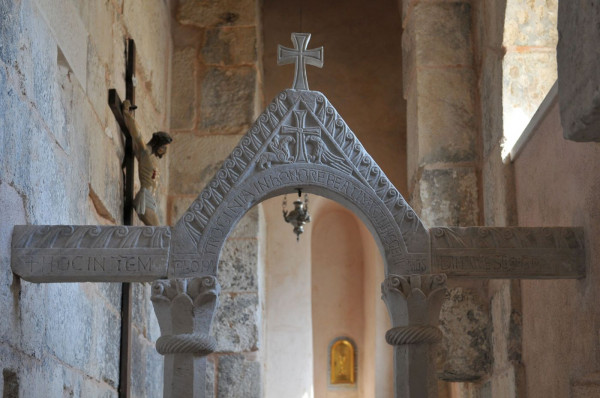Show all photos
Golden gates
Porta septemtrionalis is their Roman name. Through them, Emperor Diocletian stepped into the Palace on June 1, 305. They were built in the shape of a quadrangle, with double doors, as part of defensive military tactics (propugnaculum).
The façade is decorated with niches featuring sculptures by four tetrarchs (Diocletian, Maximian, Galerius and Constantius Chlorus). This gate, through which the road from the Peristyle, along Cardo Street, led directly to Salona as the capital of the Roman province of Dalmatia, was allowed to be used only by the emperor and members of their families. Today, with the nearby monument to Bishop Grgur Ninski, the work of the great Croatian sculptor Ivan Meštrović, they are one of Split's favorite tourist spots.
Influenced by Venice, the gate in the 16th century changed its name to Porta Aurea, or Golden Gate, which has survived to this day.
№4 of 36 places in Split
№38 of 2178 places in Croatia
№1 of 6 Monuments in Split
№2 of 55 Monuments in Croatia
Guides in this place
Place Location
Dioklecijanova ul. 7, 21000, Split
Reviews
4.9/5
Excellent
Based on
13 reviews
Excellent
12
Very Good
1
Average
0
Poor
0
Terrible
0
Nicole
25/11/2021
This gate is located at the Northern side of Diocletian's palace. It offers a grand entrance to the palace. The architectural design of this gate is magical. Though it has been modified over the years, it still stands out. Its history is pretty impressive. I visited this place and it is surrounded with great historical places and sites.
Jake
19/10/2021
This gate was impressive and fascinating. Its antique design just stands out.
Janelle
11/10/2021
Golden gate park is the largest man made park in the world, it's a must go place whether you are visiting San Francisco or a local. Some of the things we did there included biking from one end to another, seeing the de Young museum and the Academy of science during their free days, saw the buffalo in their enclosure, and had lunch at china town.
Mateo
07/10/2021
very good!!!
Jeroen
04/10/2021
Lovely landmark that is an entrance to the fortress. It has a beautiful and fascinating architectural structure that is eye catching. It has a wall that we enjoyed the sight of as we went cycling around the place and loved our tour. The gate is phenomenal and has a great historical story that enlightens more about the place and many other awesome things. The design is unique that give a different touch of a genius work of art that is beautiful.
Lars
26/09/2021
Its roman design is fabolous, its colour also blends with it making it more beautiful. There are also less crowds so anyone looking to visit will enjoy.
Renaud
24/09/2021
Awesome place that we visited while walking around the place and it has rich history that is impressive and good place to orient ourselves of the palace.
Showing 1 - 7 of 13 total










